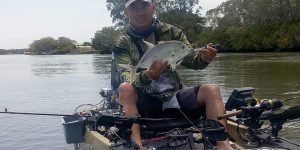Anglers need to be very careful about what they buy when it comes to fish finders.
These kinds of devices are pricey, and certain models are only suitable for specific fishing environments. You would not want to buy a fish finder, and find out that it is not suitable for use in openwater fishing. So what should you think about when buying one anyway?
What are your requirements?
First, it is time to formulate your own ideas and needs with regard to the “desired device”. That should be done in writing, ideally, you should have a checklist of features that you need in a fish finder. Which waters do I regularly go in? Which fish species are available? Which types of fishing methods do I prefer? Which boat is used with which drive? Fishing in both freshwater and saltwater? What should the echo sounder do? Fish search, water structure, depth? Do I want to find rich hotspots quickly and safely? Try to see if there are specific fish finders that you can get that will fulfil your specific requirements.
What is the transmission power of the fish finder?
The transmission power of a sonar not only determines the achievable depth but also ensures the most accurate and comprehensive representation of the detected objects. Mid-range fish finders usually provide a transmission power as a standard. This is sufficient for the vast majority of applications, especially in use with the chirp technique and a suitable chirp encoder. However, the actual power available is dependent on the encoder. Ideally, it is a good idea to get a fish finder that has got at least 500 RMS watts of transmission power. That kind of transmission power should suit most fishing situations.
What is my budget?
When it comes down to it, the biggest determiner of what kind of fish finder that you get will be your budget. Depending on how much money that you are willing to spend, the type of fish finder that you can buy will change as well. If you get a fish finder that is more affordable, then it will definitely have fewer features when compared to a more expensive model. Ideally, you should weigh the cost to feature ratio that the fish finder has. And above all, if you are going to spend a lot of money on a fish finder, you have got to make sure that it is suitable for use in the specific fishing area that you are thinking of using it in.
Should I opt for a fish finder with SideScan and DownScan technology?
This is directly related to the previous question. Fish finders with sidescan and downscan technologies are definitely pricier, but they can provide way more precise imaging. If you can afford one with these kinds of features, then you definitely should try and get a fish finder with those kinds of technologies. For example, if you are going out to go saltwater fishing a lot, then using a fish finder with combination technology is the way to go.
These are just some of the questions that you have got to ask yourself whenever you are shopping for fish finders. This is because fish finders are not cheap, and you may end up getting the wrong kind of product if you are not careful about your purchase.





